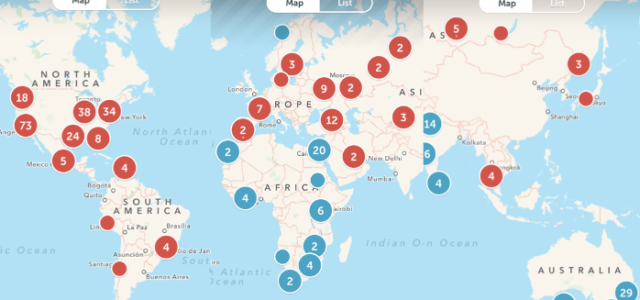Philip Evans and Patrick Forth, senior partners and managing directors of The Boston Consulting Group’s Boston and Sydney office respectively have come forward with a powerful article about digital disruption. It seems that although digital disruption is not something new to most of us, the risks and opportunities that present themselves change over time. And, without a doubt, the companies that will be the first to identify and act on those changes will have a significant competitive advantage.
According to the article, executives and business leaders are in need of a compass to guide their way through the new paths that open up in front of them. This is because the new wave of digital disruption (the 3rd) of the commercial internet we are now entering is bound to have a remarkable impact on the structures and strategies of industries and companies.
With the introduction of the internet (the 1st wave), strategists faced a huge dilemma. All of a sudden, everyone had access to rich information quite easily, which changed the way products are now made and sold. The line between industries that were (traditionally) competing with each other became blurred, allowing everyone to compete against everyone. It is not by chance that Microsoft gave away CD-ROMS of Encarta (a multimedia digital encyclopaedia) to boost the sales of their computers – an action that severely affected Encyclopædia Britannica’s business model.
Web 2.0 came as part of a wave that was meant to promote massive collaborative productions. It was the era when small businesses were doing much better when performing specific tasks compared to large enterprises. Plus, to everybody’s surprise, they did so at a significantly lower cost, too. With no geographical constrains anymore, small became particularly attractive and these small communities (i.e. Wikipedia) were able to grow with practically no cost. Those smart enough managed to adapt to the changes. For that reason, IBM challenged Microsoft’s dominance in server software with Open Source; both Google and Apple showed their will to conquer mobile by recruiting app developers; Facebook provided its users with marketing tools that helped turn friends into customers, merchandisers, and advertisers; and SAP hired app developers from among its users.
Hyperscaling is considered to be the third wave, where not just big but colossal is now becoming more attractive. We are at an important transitional point, where individual companies or business units struggle to be competitive. Those that can adopt and adapt the new business architecture and take drastic action stand a chance.
Interestingly, though, these successive waves of innovation cross each other. Take Amazon, for example, whose continuous innovations have helped them remain leaders in the game during all three waves so far. The founder and CEO of Amazon.com, Jeff Bezos, wanted to bring a breath of fresh air to bookselling and offered a catalogue that was ten times the size of the largest superstore with books on a 15% discount. However, his competitors quickly caught up so Amazon tried something new. Their Associates program allowed bloggers to earn a commission by posting book-endorsing widgets (the money collected from the click-throughs would go to the bloggers). Amazon also launched Marketplace that was competing with eBay on the selling side. And, these were only some of the strategies they implemented to tackle any challenge that came their way and provide the richest possible experience for their customers. Undeniably, more options mean greater chances for customer satisfaction, which is paramount to business sustainability and growth.
James Leighton Davis is a Customer Acquisition Consultant, Interim Digital Director and NED, primarily for PE-and-VC-backed companies across B2C, B2B and D2C markets in both the UK and Australia. Further information is available at leightondavis.com.
Article by channel:
Everything you need to know about Digital Transformation
The best articles, news and events direct to your inbox
Read more articles tagged: Featured






